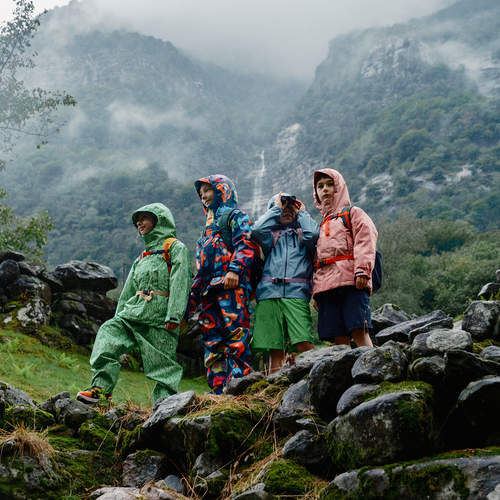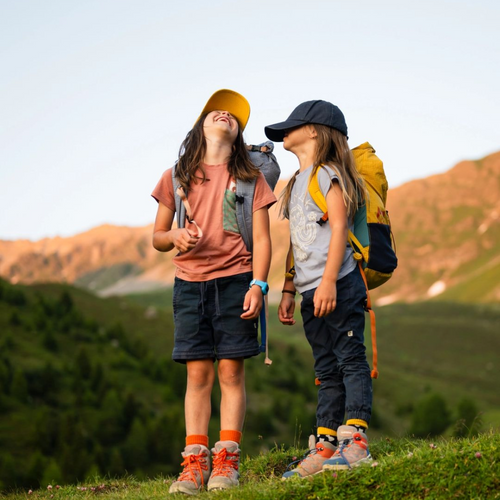Guest author: Whitney Buchli
Understanding the Carbon Footprint of a Ski Weekend
Skiing is a beloved winter activity, but it comes with an environmental cost that many of us may not immediately consider. The carbon footprint of a typical ski weekend involves several factors, including transportation emissions, the energy used to power ski lifts, and the environmental impact of snowmaking. Ski resorts often rely on artificial snow to extend the season, which requires significant amounts of water and energy. Additionally, many accommodations and facilities are energy-intensive, consuming vast amounts of electricity to heat rooms, run kitchens, and keep guests comfortable. For families looking to reduce their environmental impact, understanding these factors is the first step toward making more sustainable choices.

A Family’s Quest to Ski Sustainably
Exploring How We Can Minimize Our Environmental Impact Together
Our family began to wonder: is it possible to enjoy skiing while being mindful of our impact on the planet? Skiing is undeniably resource-intensive, but we wanted to find ways to reduce our footprint while still making the most of winter. After discussing the environmental factors involved, we decided to do some research. Together with our children, we explored options for eco-friendly resorts, accommodations, and activities that align with our goal to minimize waste and emissions. By learning about sustainable alternatives, we were excited to see that skiing responsibly was not only possible but could also lead to unique, meaningful experiences as a family.

Step 1: Choosing an Eco-Friendly Resort
Why We Opted for Tenna, Home to the World’s First Solar-Powered Ski Lift
One of the first things we learned was that the choice of resort makes a significant difference. Many large, commercial resorts consume vast amounts of energy and resources. So, we decided to visit Tenna, a small, lesser-known resort nestled in the Swiss Alps that’s home to the world’s first solar-powered ski lift. This innovative lift is entirely powered by renewable energy, and the resort itself takes a low-impact approach, avoiding artificial snowmaking and emphasizing natural conditions. Opting for a smaller, eco-conscious resort meant we could reduce our footprint while still enjoying the slopes—and the kids loved the idea of skiing in such a forward-thinking place!
For families looking to explore eco-friendly travel options, Switzerland Tourism offers a comprehensive list of ski resorts that prioritize sustainability.

Step 2: Staying in Eco-Friendly Accommodation
A Night in a Renovated Barn: Blending History with Sustainability
When we chose to stay in a beautifully renovated century-old barn, it opened up meaningful conversations with our kids about the value of giving things a second life. Instead of using new resources to build something entirely modern, this barn was thoughtfully restored with eco-friendly materials, showing how old structures can be repurposed to reduce environmental impact. This idea resonated with our children, helping them see the value in not always buying new but instead finding ways to reuse and restore. It’s a principle they could easily connect with thanks to brands like namuk, which offers a reUse platform (currently only available in Switzerland) to sell second-hand outdoor gear. By reusing well-loved clothing and passing it on to others, we can help reduce waste and extend the life of items—just like how the barn we stayed in was given a second life. It’s a practical and relatable way for kids to understand how small choices, whether in travel or in what we buy, can make a difference for the environment.

Step 3: Eating Locally and Responsibly
How Choosing Local Food Reduces Our Ski Trip’s Carbon Footprint
Food is another surprising and overlooked area where families can reduce their environmental impact while traveling. Instead of relying on imported or processed foods, we embraced local specialties like pizokel and capuns, made from ingredients sourced from nearby farms. By eating locally, we minimized the carbon emissions from food transportation and enjoyed delicious, authentic meals that connected us to the region’s culture. Our kids loved trying new flavors, and we felt good knowing our choices supported local farmers and reduced our footprint. Plus, thanks to a new Swiss regulations, restaurants are required to list the country of origin for items such as meat, making it easier to make informed, eco-friendly decisions.

Step 4: Exploring Low-Impact Winter Activities
Sledging and Snowshoeing: Fun Ways to Enjoy Winter Without the Footprint
While skiing is a highlight of any winter trip, we discovered that there are plenty of other low-impact activities that are just as fun for the whole family. We spent a few afternoons sledging down snowy hills and taking in the breathtaking landscape on snowshoe hikes—both of which are gentle on the environment since they don’t require lifts, snowmaking, or energy-intensive infrastructure. These activities gave us a deeper connection to the peaceful winter scenery and allowed us to enjoy the outdoors in a more mindful, environmentally friendly way. Plus, the kids loved the variety and the opportunity to play in the snow in different ways!

What We Learned: You Don’t Have to Be Perfect
Small Steps Make a Big Difference When Skiing Sustainably
Our family’s journey to ski more sustainably taught us that perfection isn’t the goal—it’s about making thoughtful, mindful choices. Involving our kids in these discussions helped them understand how the decisions we make as consumers, from where we stay to the activities we enjoy, can shape the world around us. More importantly, it showed them that caring about their choices is a way to make the world a more kind and compassionate place. You naturally want to protect the things you love, and by helping our children connect their actions to preserving nature, we’re teaching them to take responsibility for the environment. Whether it’s opting for a solar-powered ski lift or choosing local food, small steps can have a big impact. Together, as a family, we can enjoy the magic of winter while doing our part to protect the beauty of the planet for future generations.






















